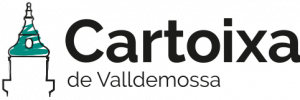
Joan Miró’s important work in the field of poster design should not only be seen as a rebellious response to the political, social and cultural circumstances of the time, but also as a reflection of his inherent sense of responsibility to society.” (1)
Joan Miró’s dedication to printmaking and printed series and his extensive work in this field were inspired by a keen interest in experimentation, a search for new creative pathways, and a desire for his work and his creations to be accessible to as many people as possible. Printmaking and the reproductions that it facilitated were the best way of democratizing his art.
To achieve this goal, pochoir, engraving and lithography were used in the creation of printed editions and posters with a high print run. At the same time, Miró was also keenly interested in the idea of teamwork with people and craftsmen whom he admired and held in high regard.
As a result of his friendship and relations with the poets and writers that he met in Paris through André Masson in about 1925, he made several illustrations for books by authors such as Paul Eluard, J. V. Foix and Tristan Tzara. He worked as a team with engravers and lithographers like Lacourière, Atelier Crommelynck et Doutrou and Fernand Mourlot in Paris; William Hayter’s Atelier 17 in New York; and Taller 46 with Joan Barbarà, Polígrafa, Arte Adrien Maeght, and Litografías Artísticas with Damià Caus in Barcelona.
Miró’s first foray into the world of posters was in 1919 when he designed a poster (which was never printed) to advertise the literary magazine l’Instant. Later, he created a design for a postage stamp, Aidez l’Espagne, produced in 1937 to raise funds for the Republican cause. This was finally published in issue 4-5 of the magazine Cahiers d’art.
It was from the 1960s that he was most actively engaged in lithography and poster-making. As well as the numbered editions and posters that he made for his own exhibitions, Miró agreed to requests for him to collaborate with associations and other bodies, demonstrating an altruistic sense of commitment and solidarity with several humanistic, cultural, political and social causes of the time. At his own initiative, he also helped to make the work of important creators like Josep Llorenç Artigas, Josep Lluís Sert and Joan Brossa known to wider numbers of people.
In the words of Rosa Maria Malet and Agustí Alcoberro: “Joan Miró’s important work in the field of poster design should not only be seen as a rebellious response to the political, social and cultural circumstances of the time, but also as a reflection of his inherent sense of responsibility to society.” (1)
Joan Miró’s generosity went beyond the design of images for posters, because when a poster was printed, an agreement was often made for a number of avant la lettre proofs to be produced and put on sale in order to pay for the edition and raise money for the association or cause to which it was dedicated. This is the case of the poster that he made for the Obra Cultural Balear, in Palma, in 1978.
In the 1960s and 70s, thousands of signed, numbered prints were produced, together with a substantial amount of the over one hundred and fifty posters that Joan Miró made.
This exhibition, ”Joan Miró. Universal Generosity and Commitment”, on show at the Municipal Museum in Valldemossa Monastery, contains over 50 posters, some plates that testify to the poster-making process, and a series of avant la lettre proofs dedicated to lithographer and collaborator Damià Caus, founder of the Barcelona printmaking studio Litografías Artísticas. Damià Caus was specifically chosen by Miró to be a member of the board of governors of the Fundació Pilar i Joan Miró a Mallorca, the foundation incorporated in 1978.
The exhibition also features a documentary section, made up of correspondence between Joan Miró and the Mallorcan painter, art critic and essayist Bartomeu Lluís Ferrà Juan (Palma, 1893-1946), who kept in contact after studying together at Academia Galí in Barcelona.
The posters and prints are organized into five different sections. The first group demonstrates his support for and links with cultural and artistic circles in Mallorca. It comprises work for exhibitions by Miró at Galería Pelaires and Galería 4 Gats and for his retrospective exhibition at the Llotja building in 1978, in addition to a poster made for the Mallorca Tourism Board.
The second section is made up of posters that reflect Miró’s political commitment to his homeland and his defence of the Catalan language, such as the posters for the 1977 Catalan Cultural Congress, the poster and avant la lettre proof for the Obra Cultural Balear, made in 1978, and the 1981 poster for writers of works in the Catalan language.
The third section comprises posters in support of international associations, such as the 1976 poster for Amnesty International and other sporting or cultural ones, like the poster for the first international tour by Merce Cunningham Dance Company and John Cage, the poster for La Claca theatre group for the play Mori el Merma and the poster for Barcelona Football Club.
The fourth features posters that were generously made for events shared with poets, artists, collaborators and friends such as J. V. Foix, Joan Brossa, Josep Llorenç Artigas and Josep Lluís Sert.
The final section consists of posters for his own exhibitions, like the 1975 poster ‘Un Camí Compartit’ (Miró-Maeght), , from Sala Gaspar in Barcelona, together with other national and international ones.
(1) Malet, Rosa Maria and Alcoberro, Agustí. (2011). Miró. Cartells d’un temps d’un país. Joan Miró Foundation, Barcelona. Catalonia History Museum.


